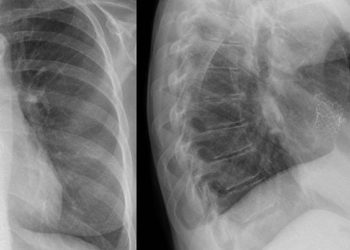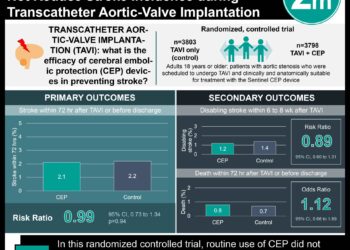Pulse oximetry screening improved detection of congenital heart disease in China
Image: PD
1. The use of pulse oximetry screening combined with clinical examination demonstrated high sensitivity and specificity for critical congenital heart disease.
Evidence Rating Level: 2 (Good)
Study Rundown: Despite being implemented in the US, the utility of pulse oximetry screening for congenital heart defects has not been studied in low-income countries. The authors of this study analyzed the screening efficacy of pulse oximetry in the detection of congenital heart disease in 13 provinces in China. Using a multi-centered, prospective design, 122,738 consecutive newborns were screened by clinical assessment followed by pulse oximetry and confirmed with fetal echocardiogram. The use of pulse oximetry screening combined with clinical examination demonstrated high sensitivity and specificity for critical congenital heart disease. The strength of the study is the prospective study design and the large sample size; however, no autopsy or congenital anomaly registries were available to follow-up on false-negative patients. This study provides strong support in the implementation of pulse oximetry screening in low-income countries.
Click to read the study in The Lancet
Click to read an accompanying editorial in The Lancet
Relevant Reading: Late Detection of Critical Congenital Heart Disease Among US Infants Estimation of the Potential Impact of Proposed Universal Screening Using Pulse Oximetry
In-Depth [prospective cohort]: The study evaluated 122,738 (aged 6h-72h) for major and critical congenital heart disease. Of this group, 120,707 were asymptomatic and 2031 were symptomatic on presentation. Pulse oximetry in addition to clinical assessment detected 136 of 146 (93%) of critical and 284 of 315 (90%) major congenital heart disease in the asymptomatic cohort. There was a significant decrease in the false-positive rate after 24 hours (OR 0.67, 95% CI 0.57-0.78, p<0.0001). An important limitation of pulse oximetry screening is the decreased sensitivity to left-heart defects, as coarctation of the aorta and interrupted aortic arch were only detected in 43% (3 of 7), and 40% (2 of 5) by screening, respectively.
More from this author: Stool DNA testing may improve screening sensitivity of colorectal cancer, Radical prostatectomy may trump radiotherapy in non-metastatic prostate cancer, Screening mammography may not decrease overall mortality in women ages 40-59, First report of acute MERS-CoV infection associated with adverse pregnancy outcome, “Hospital Report Cards” not associated with improved trauma mortality outcomes
©2012-2014 2minutemedicine.com. All rights reserved. No works may be reproduced without expressed written consent from 2minutemedicine.com. Disclaimer: We present factual information directly from peer reviewed medical journals. No post should be construed as medical advice and is not intended as such by the authors, editors, staff or by 2minutemedicine.com. PLEASE SEE A HEALTHCARE PROVIDER IN YOUR AREA IF YOU SEEK MEDICAL ADVICE OF ANY SORT.







